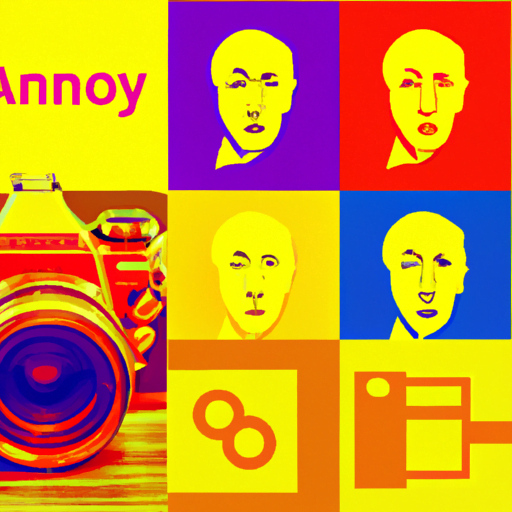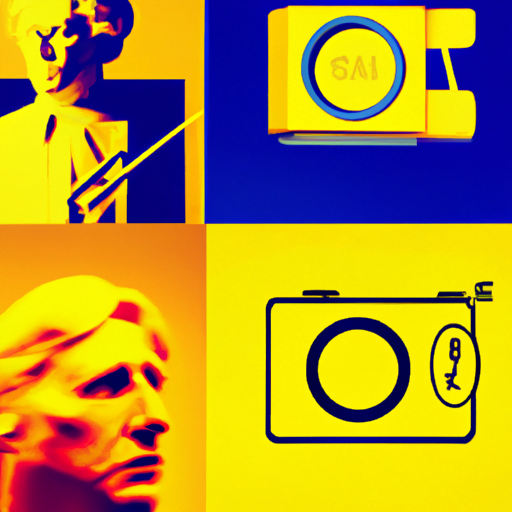
-
Table of Contents
- The Role of Emotion in Graphic Design Innovation
- The Power of Emotion in Graphic Design
- Understanding the Emotional Impact of Colors
- Case Studies: Emotional Design in Action
- Case Study 1: Coca-Cola’s “Share a Coke” Campaign
- Case Study 2: Apple’s Emotional Product Launches
- Designing for Emotional Impact
- Summary
The Role of Emotion in Graphic Design Innovation

Graphic design is a powerful tool that combines visual elements and communication to convey messages, evoke emotions, and create memorable experiences. In today’s fast-paced and highly competitive world, innovation is crucial for graphic designers to stand out and make a lasting impact. While technical skills and creativity are essential, the role of emotion in graphic design innovation should not be underestimated. This article explores the significance of emotion in graphic design innovation, backed by research, examples, and case studies.
The Power of Emotion in Graphic Design
Emotion plays a fundamental role in human decision-making and perception. It influences how we interpret and respond to visual stimuli, including graphic design. When emotions are effectively incorporated into design, it can enhance the overall user experience, create a stronger connection with the audience, and drive desired actions. Here are some key reasons why emotion is crucial in graphic design:
- Memorability: Emotionally engaging designs are more likely to be remembered by the audience. When a design evokes positive emotions, it leaves a lasting impression and increases brand recall.
- Engagement: Emotional designs capture attention and engage the audience on a deeper level. By appealing to their emotions, designers can create a stronger bond between the brand and the audience.
- Perception: Emotions influence how people perceive and interpret information. By strategically using emotions in design, designers can shape the audience’s perception and influence their attitudes and behaviors.
- Brand Differentiation: In a crowded marketplace, emotional design can help a brand stand out from the competition. By creating a unique emotional experience, designers can differentiate their brand and leave a lasting impression.
Understanding the Emotional Impact of Colors
Colors have a profound impact on human emotions and can significantly influence the success of a design. Different colors evoke different emotions and associations, making color selection a critical aspect of graphic design innovation. Here are some common emotional associations with colors:
- Red: Often associated with passion, energy, and excitement, red can be used to create a sense of urgency or draw attention to important elements in a design.
- Blue: Blue is commonly associated with trust, calmness, and reliability. It is often used by brands to convey a sense of professionalism and security.
- Yellow: Yellow is associated with happiness, optimism, and warmth. It can be used to create a cheerful and inviting atmosphere in a design.
- Green: Green is often associated with nature, growth, and freshness. It is commonly used in designs related to sustainability, health, and environmental causes.
- Purple: Purple is associated with luxury, creativity, and spirituality. It can be used to create a sense of elegance and sophistication in a design.
By understanding the emotional impact of colors, graphic designers can strategically select and combine colors to evoke specific emotions and create the desired emotional response from the audience.
Case Studies: Emotional Design in Action
Several successful brands have leveraged emotional design to create innovative and impactful graphic designs. Let’s explore two case studies that highlight the role of emotion in graphic design innovation:
Case Study 1: Coca-Cola’s “Share a Coke” Campaign
In 2011, Coca-Cola launched its “Share a Coke” campaign, which aimed to create a personal connection with consumers. The campaign replaced the Coca-Cola logo on their bottles with popular names and phrases. By personalizing the packaging, Coca-Cola tapped into the emotions of their audience, making the experience more relatable and memorable. The campaign generated a significant emotional response, with people actively searching for bottles with their names on them and sharing their experiences on social media. The emotional connection created through the campaign resulted in increased sales and brand loyalty.
Case Study 2: Apple’s Emotional Product Launches
Apple is renowned for its emotional product launches, which create a sense of anticipation, excitement, and desire among consumers. Apple’s design philosophy focuses on simplicity, elegance, and user experience, evoking positive emotions and a sense of luxury. From the sleek packaging to the intuitive user interface, every aspect of Apple’s design is carefully crafted to create an emotional connection with the audience. By appealing to the emotions of their customers, Apple has successfully built a loyal customer base and established itself as a leader in the tech industry.
Designing for Emotional Impact
Designing for emotional impact requires a deep understanding of the target audience, their needs, and their emotional triggers. Here are some strategies to incorporate emotion into graphic design innovation:
- Research and Empathy: Conduct thorough research to understand the target audience’s demographics, preferences, and emotional triggers. Empathize with their needs and aspirations to create designs that resonate with them emotionally.
- Storytelling: Use storytelling techniques to create an emotional narrative within the design. By telling a compelling story, designers can evoke emotions and create a memorable experience for the audience.
- Visual Metaphors: Incorporate visual metaphors that symbolize emotions or concepts relevant to the design. Metaphors can evoke emotions and add depth to the design, making it more engaging and impactful.
- User Testing: Conduct user testing to gauge the emotional impact of the design on the target audience. Collect feedback and iterate on the design to optimize its emotional appeal.
Summary
Emotion plays a vital role in graphic design innovation. By understanding the power of emotion and incorporating it strategically into design, graphic designers can create memorable experiences, engage the audience on a deeper level, and drive desired actions. Colors, storytelling, visual metaphors, and user testing are just a few of the tools and techniques that can be used to evoke emotions and create impactful designs. Successful brands like Coca-Cola and Apple have leveraged emotional design to create strong connections with their audience and achieve remarkable success. As the field of graphic design continues to evolve, designers who embrace the role of emotion in their work will have a competitive edge and the ability to create designs that truly resonate with their audience.
